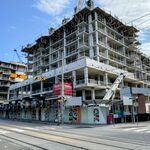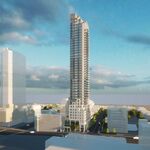ssiguy2
Senior Member
The easiest thing to do is simply take a poll on what Torontonians want. It's already over budget and with demands for money from every area of the city and Torontonians not willing to tax themselves at appropriate levels, it should be presented that the city can no longer afford the project. This with it still being an eyesore and costing {with the DVP} tens of millions per year, present people with an option.............either it goes ahead as a blvd or the remaining portion is tunneled with all infrastructure and ongoing maintenance costs being covered by a $3.50 toll ...........the same as a TTC. ticket.
Let the people decide because in such a scenario, Toronto is a winner no matter what happens because either way it gets rid of eyesore.
Let the people decide because in such a scenario, Toronto is a winner no matter what happens because either way it gets rid of eyesore.




